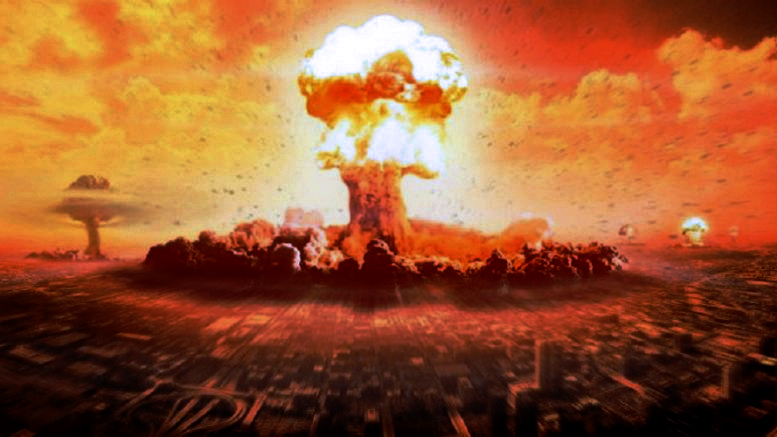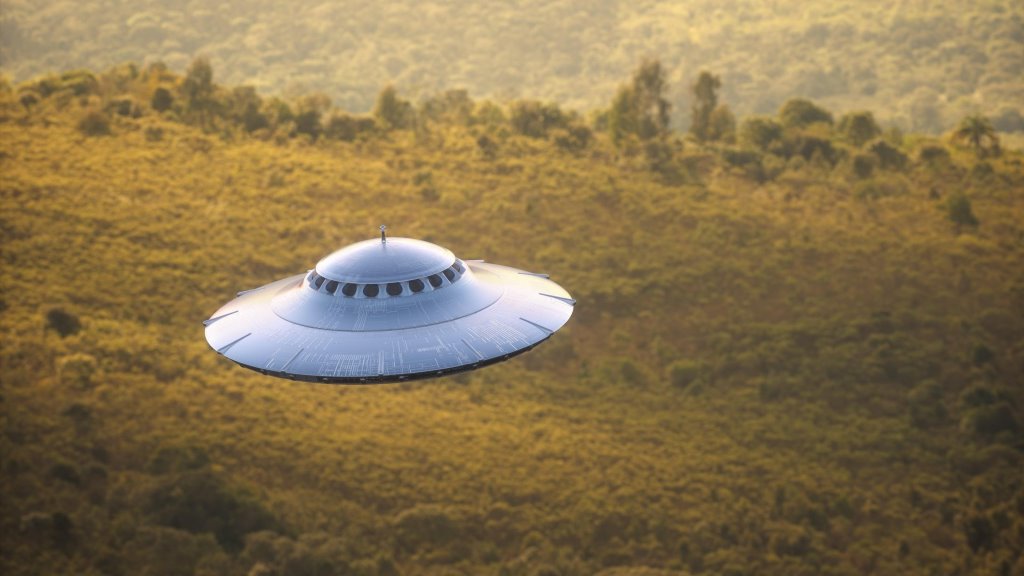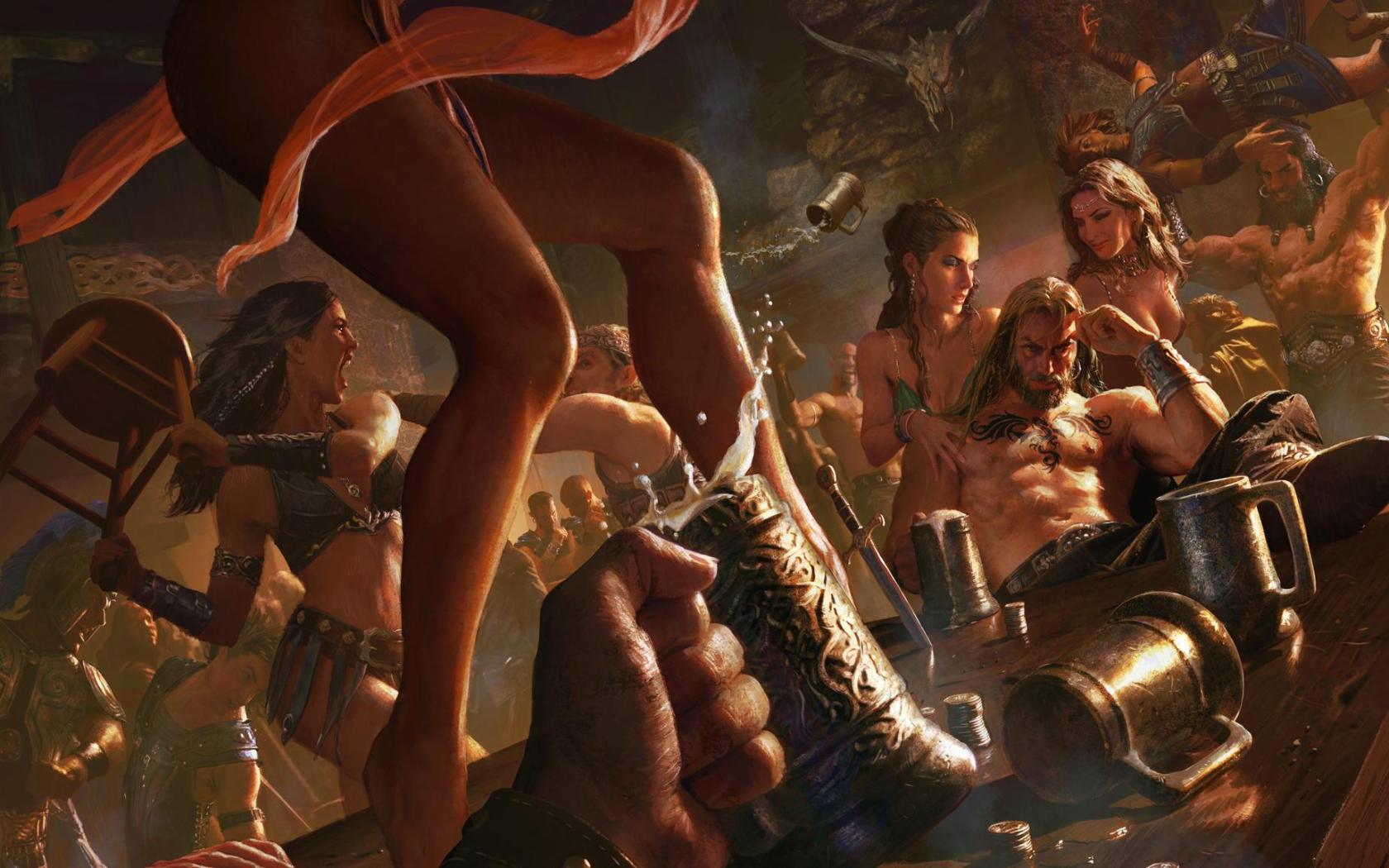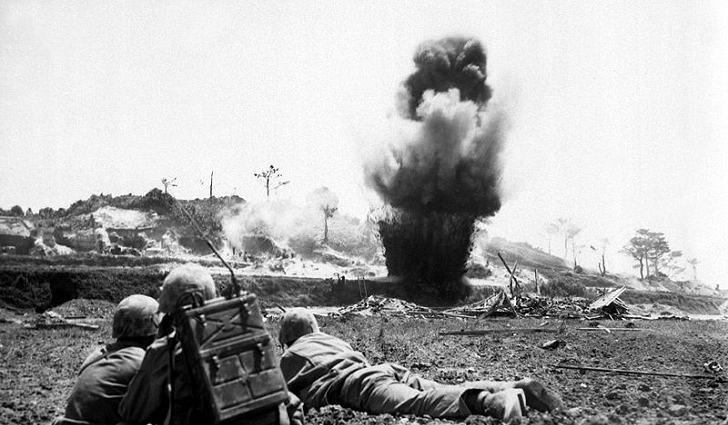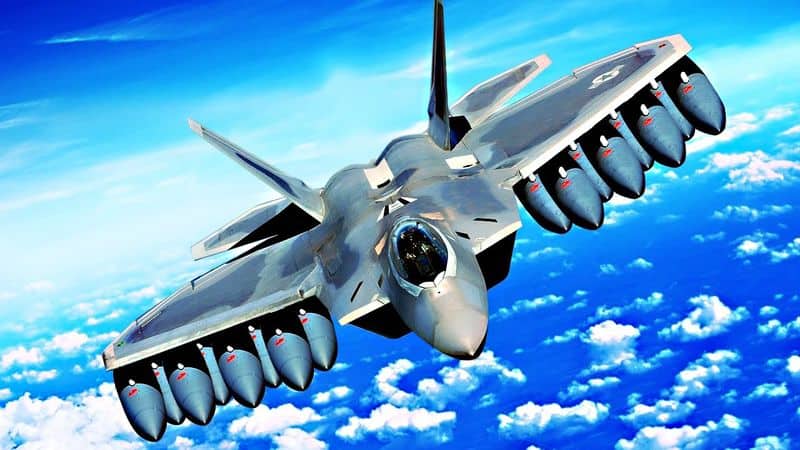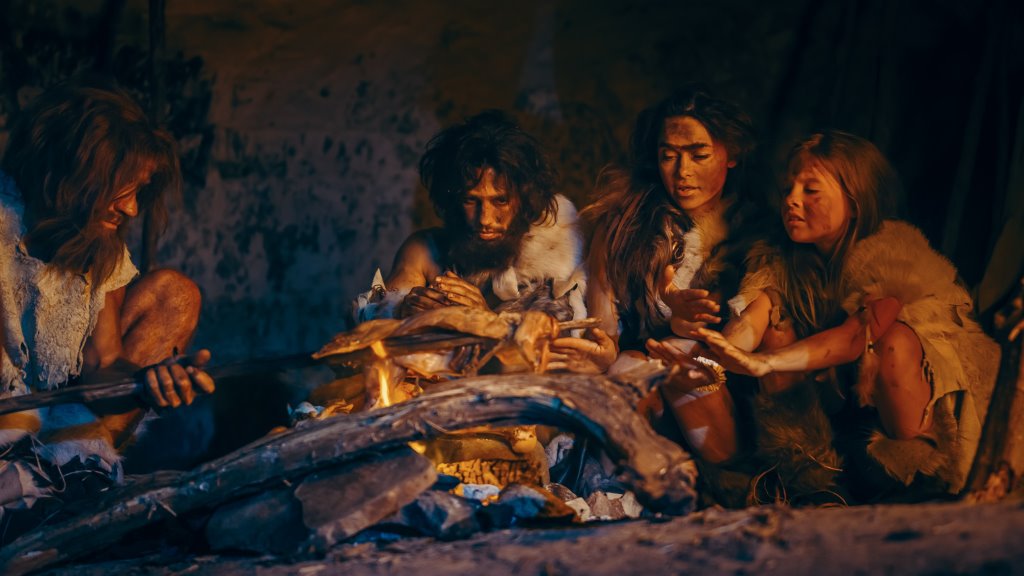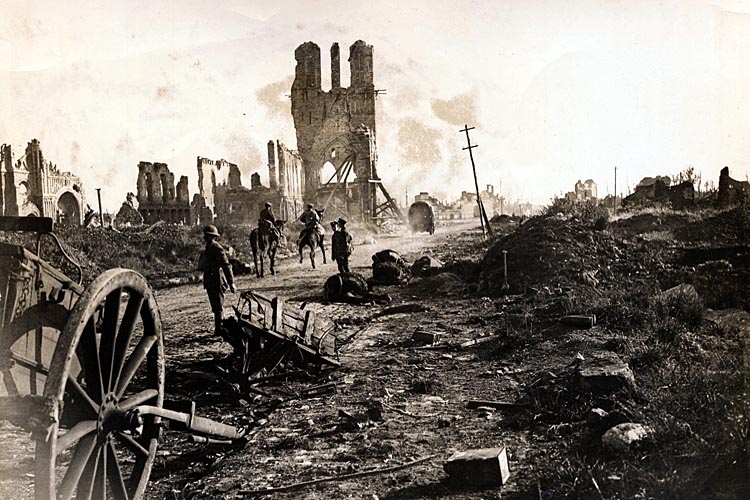War has a way of dragging out extremes in human behavior. Sometimes it inspires breathtaking engineering feats; other times, it leaves scars so deep that entire landscapes are reshaped for centuries. The Great Wall of China, for example, wasn’t built to impress tourists. It was an enormous “keep out” sign for northern invaders, a wall forged by fear, ambition, and the determination to survive. And that is only one example in a long list of times humanity literally reshaped the face of the Earth for the sake of conflict.
Across ancient empires, armies pushed nature aside to get an advantage, carving new geography into existence or wiping out old worlds completely. Some of these moves were so extreme that the modern world still carries their imprint. What follows are five moments where warfare didn’t just determine who won the day — it permanently altered the planet itself.
Alexander the Great Turns an Island Into a Peninsula

History is full of bold military strategies, but few feel as wildly ambitious as Alexander the Great’s assault on the fortified island city of Tyre. For a man who already had a reputation for doing the impossible, this siege still stands out as one of his most audacious maneuvers. Tyre, perched off the Mediterranean coast of what is now Lebanon, was considered an untouchable stronghold — an ancient equivalent of a floating fortress prison. Its walls rose straight from the sea, surrounding the island like an armored shell. Without a navy at his disposal, Alexander found himself staring at a city that seemed specifically designed to mock invading armies.

What made Tyre especially intimidating was the psychological advantage: it projected confidence. People believed it couldn’t be taken, and that belief alone made its defenses stronger. But Alexander’s mind didn’t operate on the same rules everyone else used. Instead of looking for a naval solution he didn’t have, he took a much stranger and far more demanding approach — one that required altering the Earth itself.
He simply decided the island would stop being an island.
Alexander ordered his men to build a massive land bridge stretching roughly a kilometer across open water, stone by stone, timber by timber, while arrows and flaming projectiles rained down from Tyre’s defenders and its ships. It was the sort of plan that sounded like something drawn on a bar napkin after too much wine — the kind no sensible general would approve. But Alexander’s advantage wasn’t caution; it was his ability to convince thousands of men to attempt the unthinkable.

Days turned into weeks, and weeks into months. Workers hauled boulders from the mainland, dumping them into the water to form the foundations of a new causeway. The closer the bridge crept toward Tyre, the more desperate the city’s defense became. Yet Alexander’s army kept building, weathering the attacks, refusing to abandon their slow, punishing march across the sea.
Eventually, the land bridge reached the city walls. Siege towers rolled forward, grinding across a man-made peninsula that hadn’t existed before this campaign began. Allies joined in, sending ships that reinforced the assault once they realized the impossible was actually happening. When the final attack began, Alexander himself led the charge from atop one of the towering siege engines that now had a direct path to Tyre’s defenses.
The city fell — and more importantly, Tyre’s geography was rewritten forever. The land bridge Alexander’s soldiers created remains to this day, expanded over centuries by natural sediment but still unmistakably rooted in that original wartime project. One of the most ancient island fortresses on Earth was forced to join the mainland because a single commander refused to accept the idea of “inaccessible.”

4 – Legio X Fretensis Builds a Ramp to Take Masada

Among Rome’s many military legions, Legio X Fretensis had a reputation for relentless determination, and nowhere is that more evident than in their role in the final battle of the First Jewish–Roman War. Their target was Masada, a cliff-top fortress rising above the Judean desert — an isolated, nearly vertical stronghold that seemed designed to humiliate invaders simply by existing. Imagine a natural stone skyscraper with a fortress perched on top, surrounded by stark emptiness and impossible slopes. That was Masada.

The Romans admired engineering almost as much as they admired conquering, and Masada presented them with a new puzzle: how do you attack a fortress that sits high above you, where defenders can hurl rocks, arrows, and pure rage down onto your troops with little risk of counterattack? The answer, strangely enough, echoed Alexander’s strategy at Tyre — reshape the terrain until the impossible becomes reachable.
They decided to build a ramp. A colossal, mountain-scale ramp.
The idea was deceptively simple but brutally difficult: pile up enough stone and earth against one side of the mountain to create a gently rising incline long enough to haul siege towers and battering rams to the top. The legionaries working on it endured constant attacks, insults, makeshift weapons, and a steady rain of projectiles from defenders who were desperate to break their resolve.

Even under horrific conditions, the Romans kept working. They moved earth in teams, protected by shields and temporary structures, advancing a little more each day. What looked like an absurd dream began taking shape as a physical reality — a sloping highway of stone stretching upward toward the fortress walls.
When the ramp finally reached its full height, Rome prepared for the crushing final assault… only to discover that the defenders had taken their own lives rather than be captured. It was a moment that combined triumph, heartbreak, and a deep sense of futility for the soldiers who had essentially built part of a mountain to reach this place.

Masada’s ramp still scars the desert today — a permanent trace of the moment Rome literally altered a landscape to win a war that ended before they could swing a single battering ram.
3 – The Mongols Erase Baghdad

When people speak about the Mongols reshaping history, they often focus on their conquests, their military speed, or their empire stretching across continents. But one of the most devastating transformations they ever unleashed wasn’t just political — it was environmental, cultural, and civilizational. To understand the scale of what happened, you have to picture Baghdad at its peak: a glittering capital of the Islamic Golden Age, a meeting point where scholars, merchants, astronomers, philosophers, and travelers mixed ideas and traded knowledge. For centuries, it stood at the heart of global learning, a beacon that attracted minds from every corner of the Old World.

This wasn’t just a city; it was a living encyclopedia. Its libraries preserved ancient texts, its scholars pushed forward mathematics and medicine, and its canals turned the surrounding lands into fertile green belts. So when Hulagu Khan — grandson of Genghis Khan — turned his attention to Baghdad during his campaign against the Persian territories, what followed wasn’t merely a military victory. It was one of the biggest historical erasures ever recorded.
The Mongols reached the gates of Baghdad and captured it with shocking speed, overwhelming defenses that had once seemed secure. What came afterward is difficult to fully grasp even with modern hindsight. Contemporary records speak of tens of thousands, sometimes hundreds of thousands, slaughtered in the streets. Scholars, artisans, merchants, and ordinary families were swept up in the chaos. Mosques were stripped, homes looted, neighborhoods burned. The cultural heartbeat of a civilization slowed to a stop almost overnight.

But the true, long-lasting destruction came not from fire or swords but from what the Mongols chose to eliminate. They targeted Baghdad’s intellectual core — the great libraries and learning centers that had accumulated centuries of knowledge. The most infamous loss was the Grand Library of Baghdad. Its countless manuscripts, many irreplaceable, were hurled into the Tigris River. Legend says the river ran black with ink for days, a symbolic death marking the drowning of entire branches of human understanding.
Then came the environmental blow. Baghdad’s irrigation systems, the same networks that had sustained Mesopotamian agriculture since ancient Babylon, were deliberately filled in. This was not collateral damage — it was intentional dismantling. Without these canals, the once-lush agricultural region surrounding the city dried out. Fertile soil turned to dust. Crops failed, farmers fled, and the land that had fed civilizations for thousands of years became desolate.
The Mongols didn’t just topple a city; they reset an entire region. The collapse of Baghdad’s intellectual and agricultural infrastructure rippled across the Middle East, creating a cultural void that took centuries to even partially heal. And perhaps the most staggering fact is this: nearly 760 years later, Baghdad still hasn’t fully recovered the brilliance or prosperity it once commanded.
2 – The Dutch Put Themselves on an Island

Alexander the Great connected an island to the mainland to win a siege. The Dutch, centuries later, would go in the opposite direction — separating themselves from the continent to gain a defensive advantage. This ambitious maneuver wasn’t just clever engineering. It was a geopolitical magic trick that turned the Netherlands into a fortress state whenever danger approached.

In the 17th century, the Dutch Republic was on the verge of global dominance. They controlled shipping routes, built a commercial empire, and rivaled even the world’s major naval powers. But they still had one glaring weakness: geography. Being attached to mainland Europe meant any ambitious neighbor could simply march in with enough soldiers and determination. The Dutch wanted the strategic freedom of an island nation without actually being one.
Their answer was the Dutch Water Line — an engineered flood defense that could transform much of Holland into a shallow artificial sea when activated. Maurice of Nassau, a military leader whose title looked odd but whose strategic mind was sharp, envisioned a system of canals, sluices, and floodable fields that could be opened at a moment’s notice. The idea was simple: drown the countryside just enough to hinder enemy movement while still allowing Dutch boats to maneuver freely.
His successor put the plan into action. Workers dug channels, strengthened dams, constructed sluice gates, and shaped the landscape into a defensive trap. When the Water Line was deployed, roads disappeared underwater, fields became misleadingly shallow lakes, and a seemingly ordinary stretch of land turned into a slippery maze where heavy cavalry and artillery sank or toppled.

The Dutch even went further, laying hidden defenses beneath the water — submerged stakes, barbed wire, and early forms of mines. Invaders who thought they saw a passable area often found themselves stuck, injured, or exposed to Dutch fire from fortified positions just above the flooding.
When Louis XIV launched the Franco–Dutch War and marched his armies into the region, the Water Line proved its worth. The flooding halted the French advance cold. Their military strength meant nothing against an enemy who had reshaped the landscape itself. With supply lines vulnerable and progress impossible, the French eventually withdrew, frustrated and defeated.

This defensive engineering didn’t just save the Dutch Republic — it reshaped their national identity. It reinforced the idea that the Dutch survive by controlling water, mastering it, bending it to their will. Even centuries later, the logic behind the Water Line still influences Dutch flood management and long-term planning. They may not have become the dominant world empire they once seemed destined to be, but they did something nearly as remarkable: they redesigned their entire environment to stay alive.
1 – The Mongols Weaponize the Bubonic Plague

Superweapons in history come in many forms — massive cannons, fortified walls, secret naval techniques, or explosive technologies that define eras. But nothing compares to what the Mongols did in the 14th century, when they accidentally stumbled upon a weapon so catastrophic it reshaped the entire world: the bacterium Yersinia pestis, better known as the Black Death.
The Mongols were already infamous for their brutal efficiency on the battlefield, but during the Siege of Caffa in 1346, they encountered something new. As their armies advanced through Central Asia, they unknowingly disrupted ecosystems and animal migration patterns, driving disease-carrying rodents closer to human settlements. The plague infiltrated the ranks of the Golden Horde, killing soldiers faster than any army could. Under normal circumstances, a disease tearing through one’s own troops would be a disaster — a sign to retreat, regroup, and survive.
But the Mongols weren’t known for subtlety. They saw an opportunity.
During the siege, the Horde allegedly began gathering their plague-stricken dead, loading them into catapults, and hurling their corpses over the walls of Caffa. It was a horrifying and strangely effective strategy. The defenders inside the city suddenly found themselves surrounded not only by invaders but by the threat of a disease that spread silently and swiftly.

As panic spread, refugees fled by ship, unknowingly carrying the plague into ports across the Mediterranean. Boats drifted into harbor towns with crews either dying or already dead. Entire cities were blindsided by an invisible enemy arriving long before rumors from Caffa ever did.
The numbers alone are staggering. At the time the Mongols began their biological onslaught, the world population hovered around 450 million. By the time the Black Death burned through Europe, Asia, and parts of the Middle East, the global total had dropped by as much as 100 million people. One out of every four or five humans alive at the time was wiped from existence.

The consequences were irreversible: labor shortages reshaped economies, social structures collapsed, religious movements surged and fractured, and entire regions depopulated. The modern world — its borders, technologies, philosophies, and workforce — emerged from the ashes of this catastrophe.
It’s chilling to think about, but in a very real sense, much of what we recognize today in global society grew out of a moment when one army decided to use sickness itself as a weapon.


